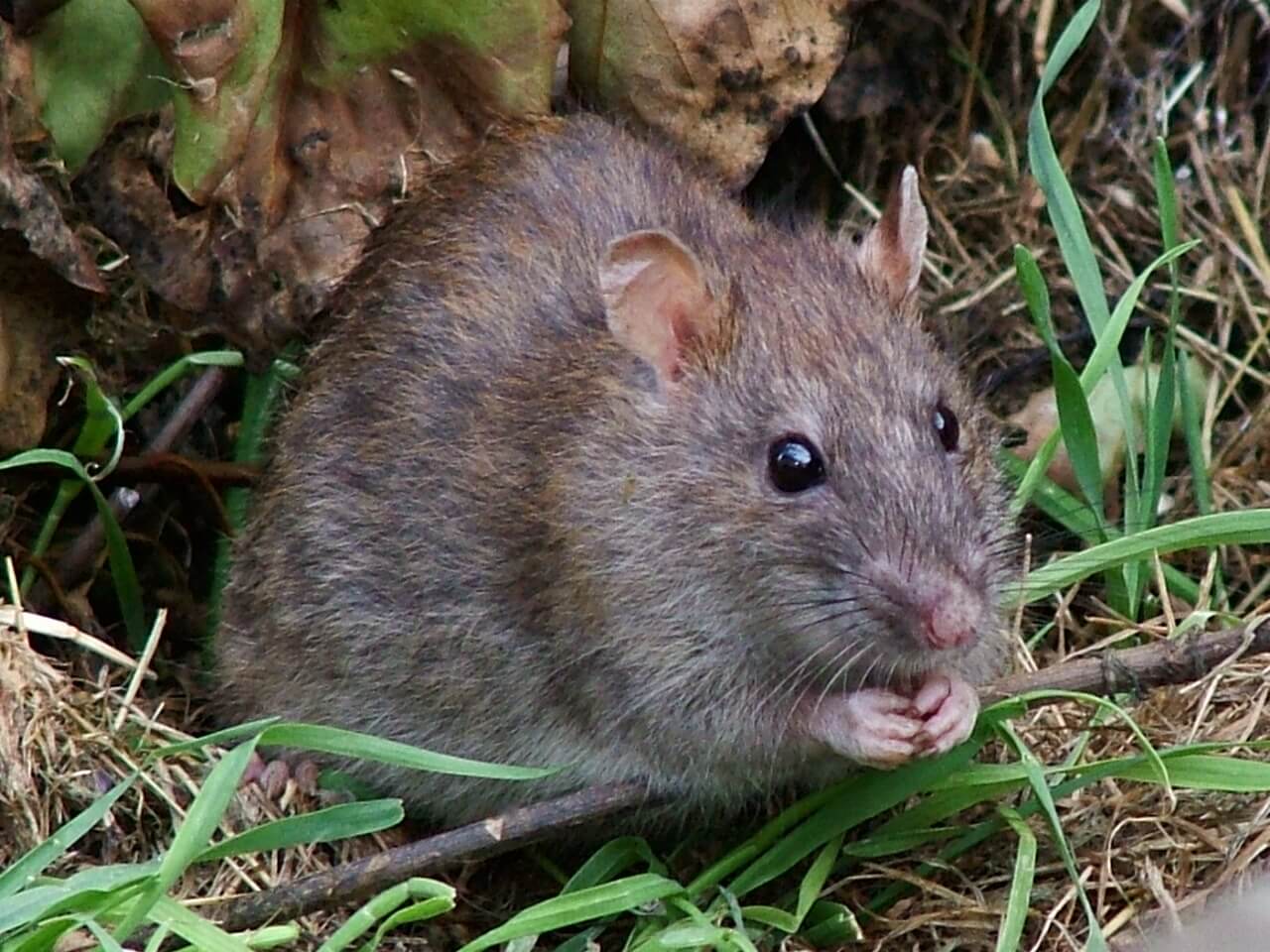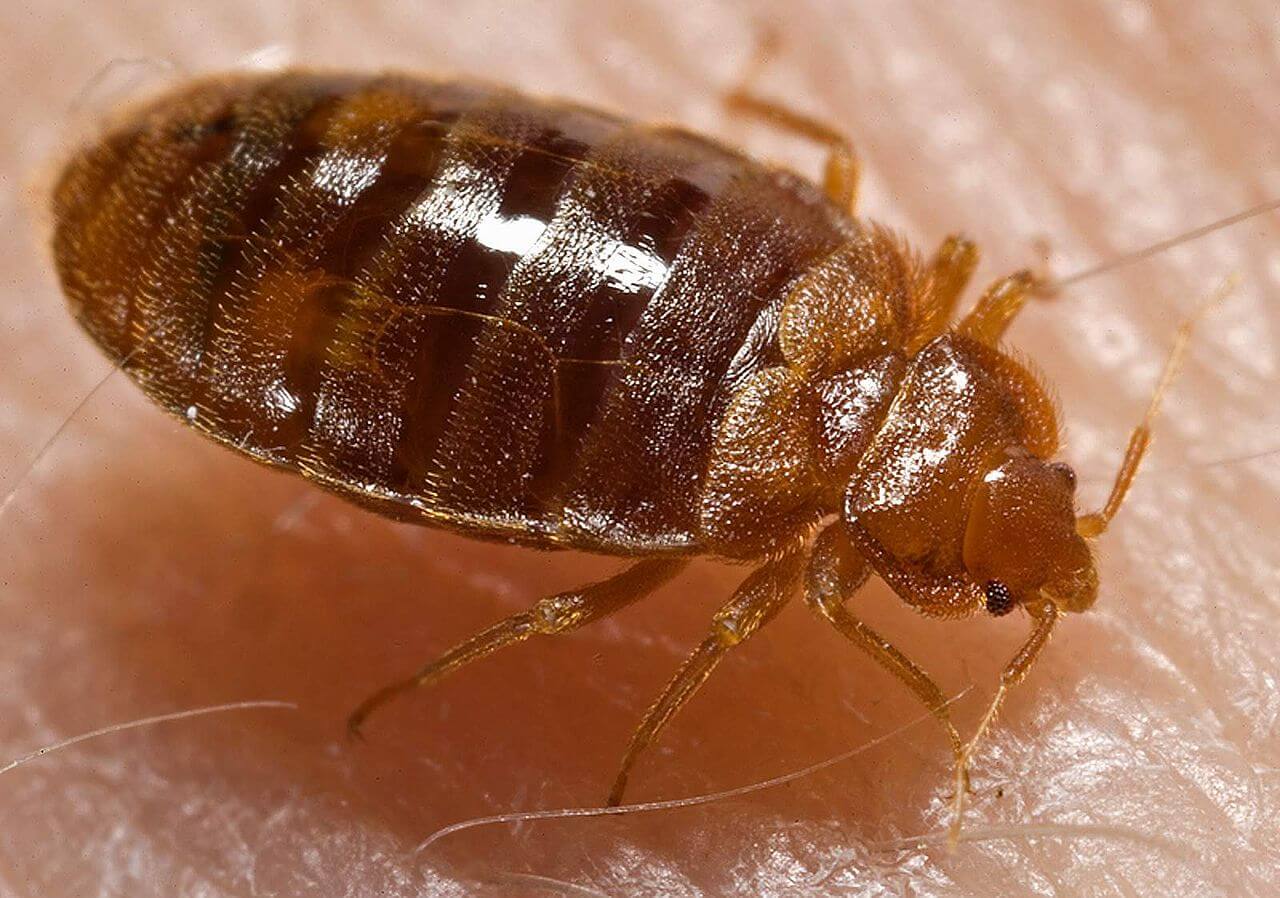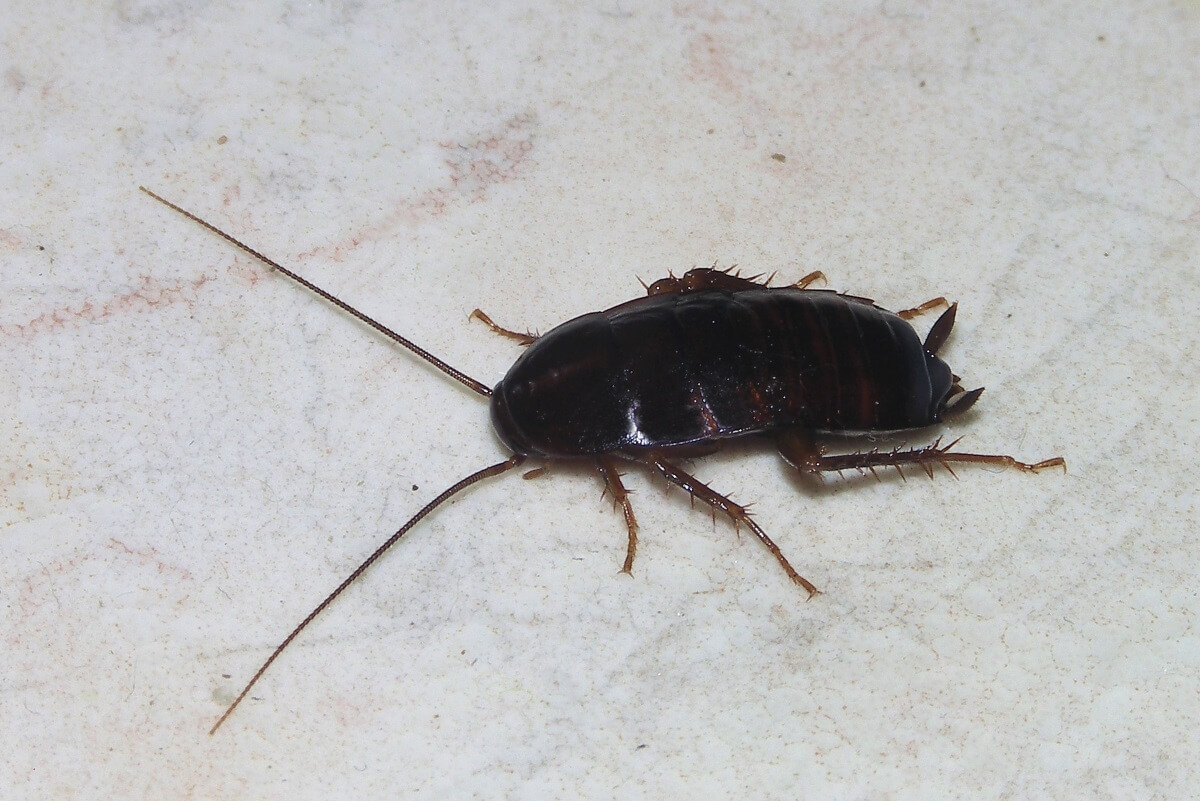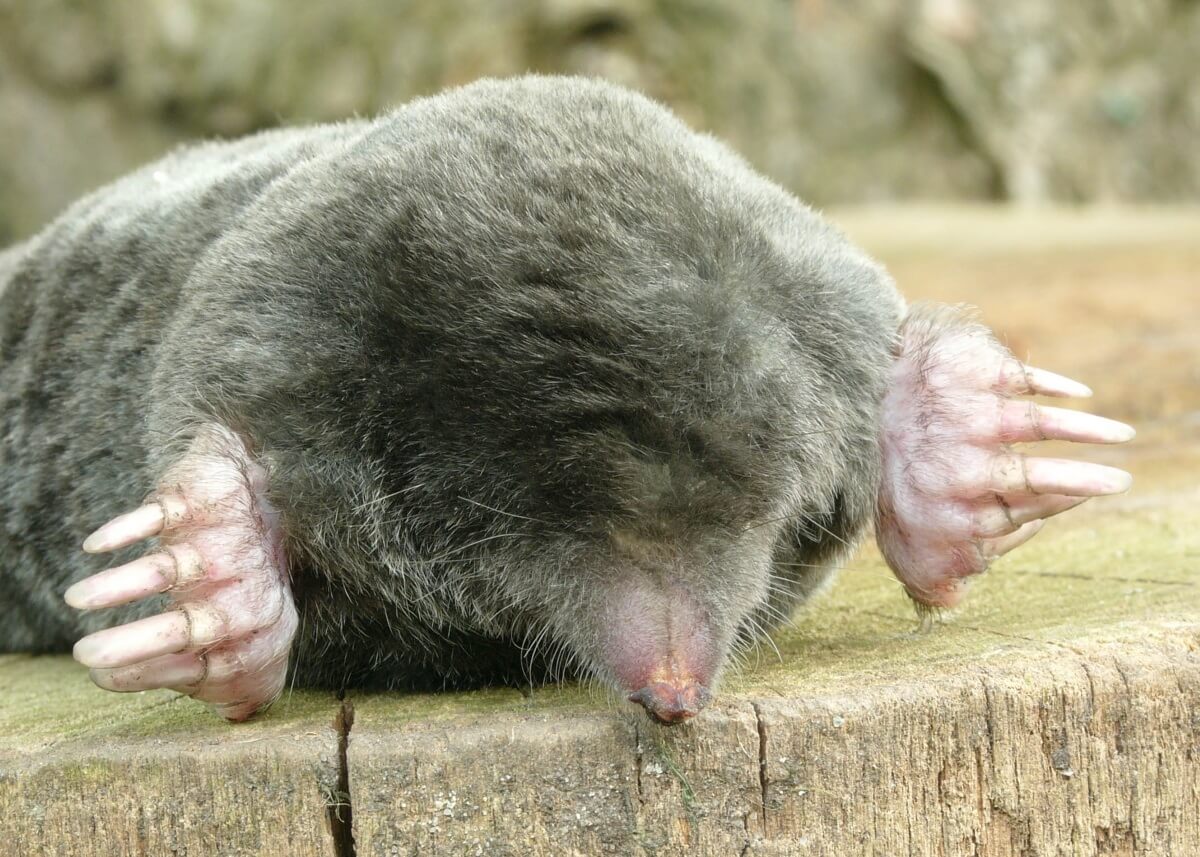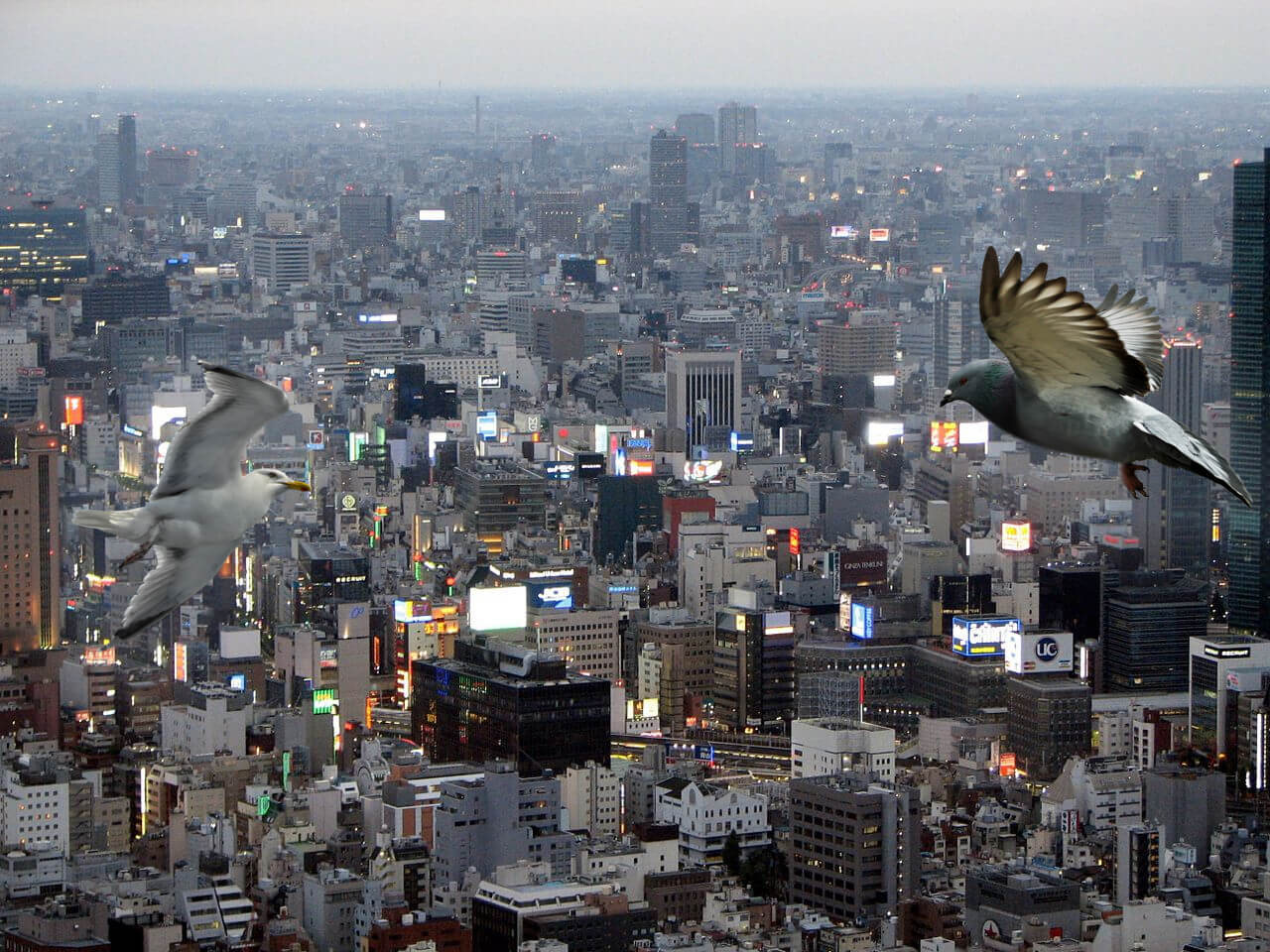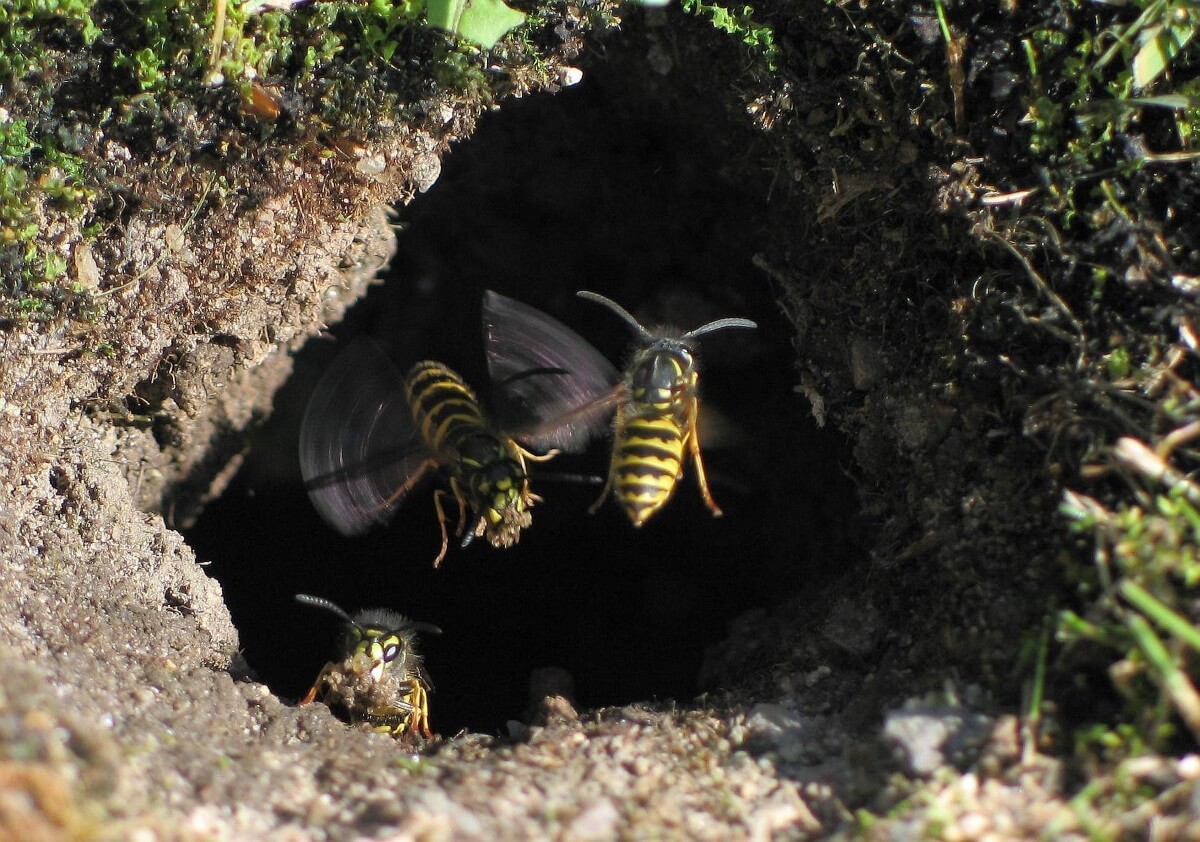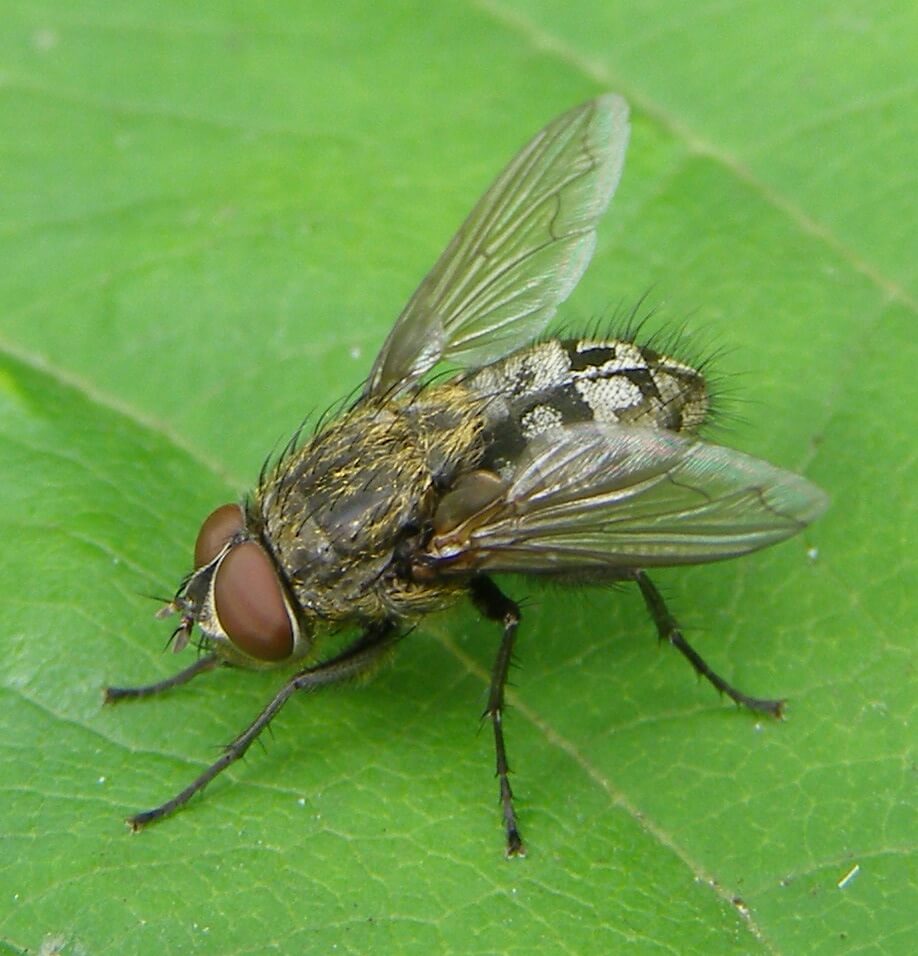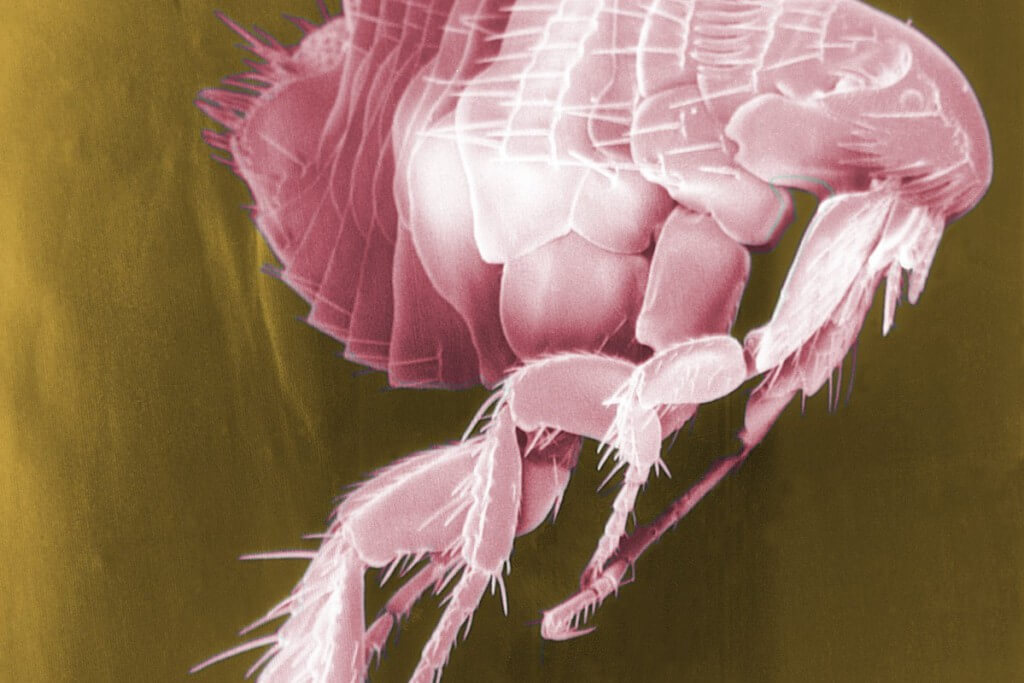Flea Pest Bio
Overview
Fleas are the insects forming the order Siphonaptera. They are wingless, with mouthparts adapted for piercing skin and sucking blood. Fleas are external parasites, living by hematophagy off the blood of mammals and birds.
Description
Fleas are wingless insects (1/16 to 1/8-inch (1.5 to 3.3 mm) long) that are agile, usually dark coloured (for example, the reddish-brown of the cat flea), with tube-like mouth-parts adapted to feeding on the blood of their hosts. Their legs are long, the hind pair well adapted for jumping: a flea can jump vertically up to 7 inches (18 cm) and horizontally up to 13 inches (33 cm), making the flea one of the best jumpers of all known animals (relative to body size), second only to the frog hopper.
Reproduction
Fleas lay tiny white oval-shaped eggs better viewed through a loupe or magnifying glass. The larva is small and pale, has bristles covering its worm-like body, lacks eyes, and has mouth-parts adapted to chewing. The larvae feed on various organic matter, especially the faeces of mature fleas. The adult flea's diet consists solely of fresh blood. In the pupa phase, the larva is enclosed in a silken, debris-covered cocoon.
Once the flea reaches adulthood, its primary goal is to find blood and then to reproduce. Its total life span can be as short as one year, but may be several years in ideal conditions. Female fleas can lay 5000 or more eggs over their life, allowing for phenomenal growth rates. Average 30–90 days.
| Flea Pest - Bio | |
| Pest Length | 1/16 to 1/8-inch (1.5 to 3.3 mm) |
| Pest Special Ability | Vertical Jump 18cm Horizontal Jump 33cm |
| Pest Weight | 0.8 grams |
| Pest Life Span | 2 to 3 months |
| Pest Attracted By | Warmth |
| Pest Habitat | Host Sleeping Areas |

